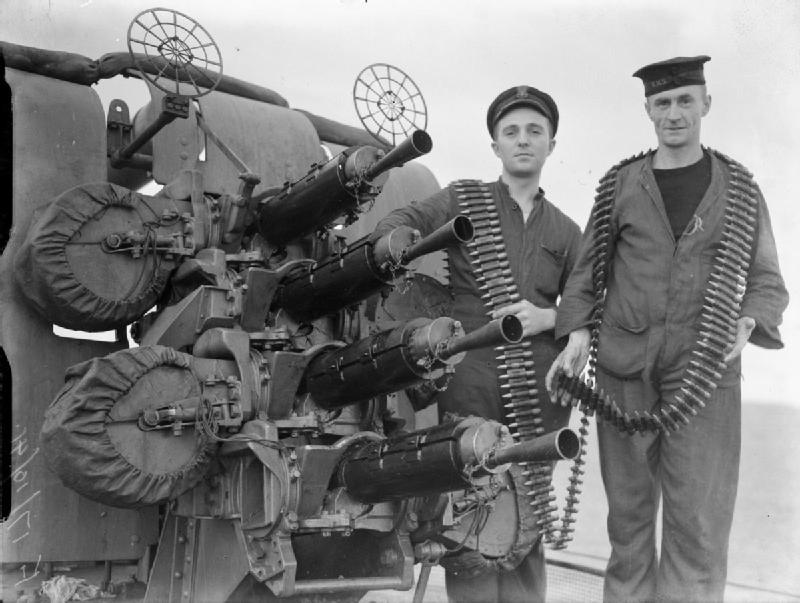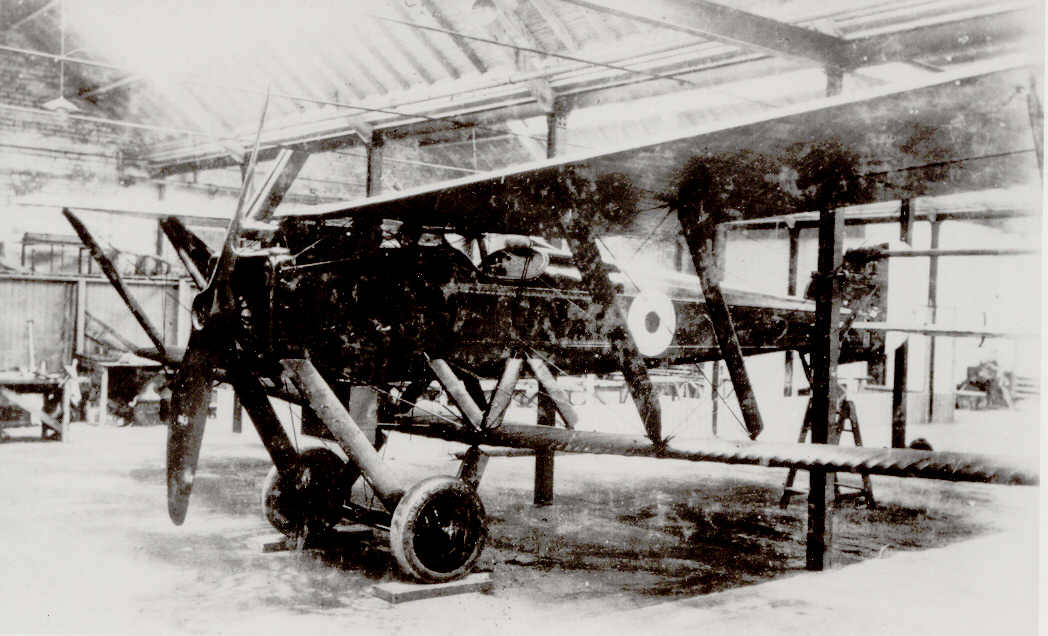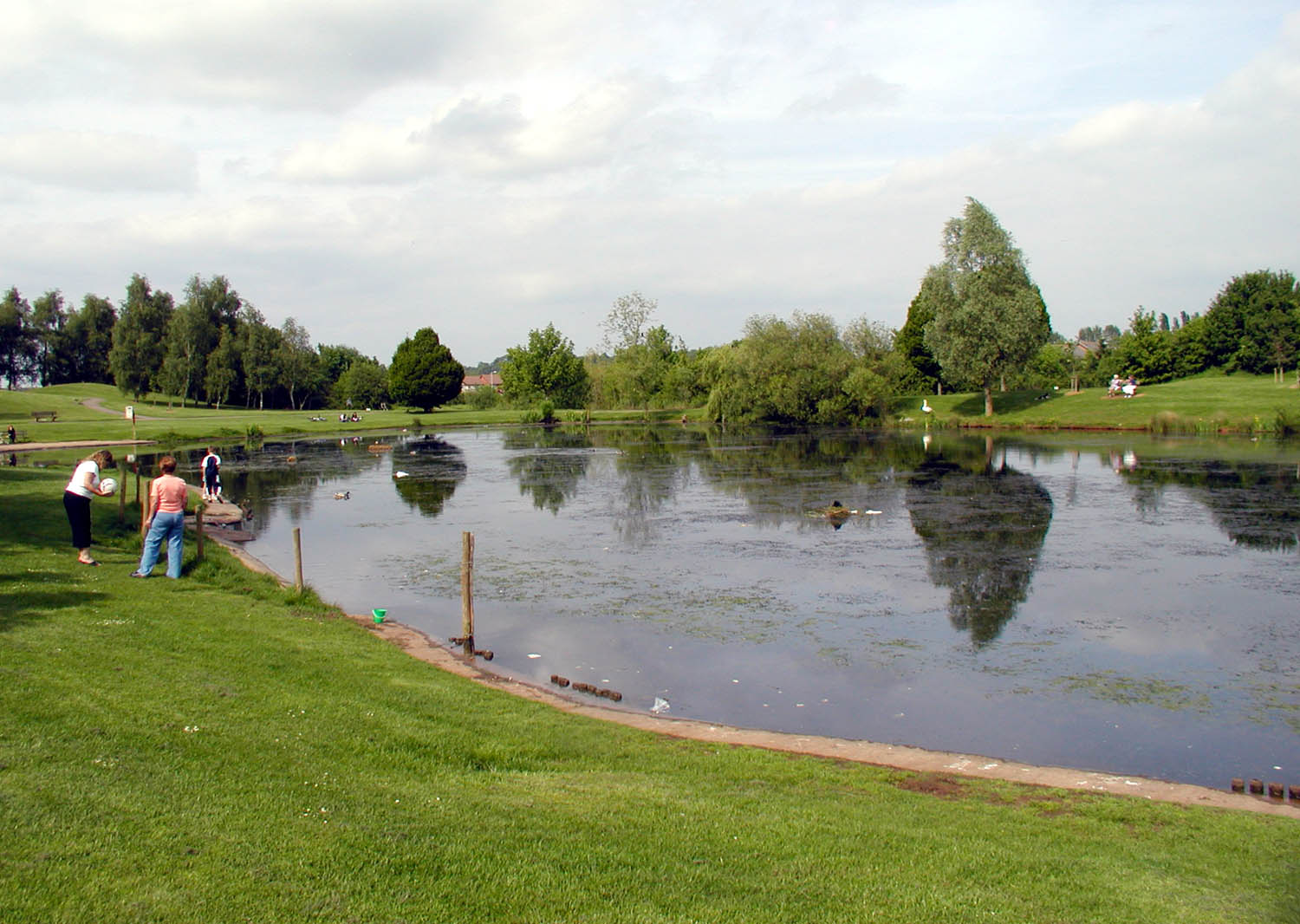|
Parnall Pipit
The Parnall Pipit was a single-engined, single-seat naval Fighter aircraft, fighter designed to an Air Ministry specification in 1927. Two prototypes were built but both were destroyed by tail flutter. Design and development The Pipit was Parnall's submission to List of Air Ministry Specifications#1920-1929, Air Ministry specification 21/26, which called for a single-seat shipborne fighter. The same specification attracted a version of the Vickers 141, modified from the original landplane fighter and the private venture Hawker Hoopoe The specification required operation off deck or water. The Pipit was a single-bay biplane with staggered, equal-span wings, unswept and of constant chord. The upper wing only carried dihedral; the ailerons were on the lower wing, extending over most of the span. There was a large rounded cutout in the upper wing over the cockpit for visibility, since the pilot's head was immediately below the trailing edge. Because of the stagger, he sat ah ... [...More Info...] [...Related Items...] OR: [Wikipedia] [Google] [Baidu] |
WikiProject Aircraft
A WikiProject, or Wikiproject, is an affinity group for contributors with shared goals within the Wikimedia movement. WikiProjects are prevalent within the largest wiki, Wikipedia, and exist to varying degrees within Wikimedia project, sibling projects such as Wiktionary, Wikiquote, Wikidata, and Wikisource. They also exist in different languages, and translation of articles is a form of their collaboration. During the COVID-19 pandemic, CBS News noted the role of Wikipedia's WikiProject Medicine in maintaining the accuracy of articles related to the disease. Another WikiProject that has drawn attention is WikiProject Women Scientists, which was profiled by ''Smithsonian Magazine, Smithsonian'' for its efforts to improve coverage of women scientists which the profile noted had "helped increase the number of female scientists on Wikipedia from around 1,600 to over 5,000". On Wikipedia Some Wikipedia WikiProjects are substantial enough to engage in cooperative activities with outsi ... [...More Info...] [...Related Items...] OR: [Wikipedia] [Google] [Baidu] |
RAF Martlesham Heath
Royal Air Force Martlesham Heath or more simply RAF Martlesham Heath is a former Royal Air Force station located southwest of Woodbridge, Suffolk, England. It was active between 1917 and 1963, and played an important role in the development of airborne radar. History RFC/RAF prewar use Martlesham Heath was first used as a Royal Flying Corps airfield during the First World War. In 1917 it became home to the Aeroplane Experimental Unit, RFC which moved from Upavon with the site named as the Aeroplane Experimental Station, next became the Aeroplane Experimental Establishment (Home) in 1920 and then the Aeroplane and Armament Experimental Establishment (A&AEE) in 1924. The A&AEE carried the evaluation and testing of many of the aircraft types and much of the armament and other equipment that would later be used during the Second World War. No. 22 Squadron RAF and No. 15 Squadron RAF were present during the 1920s. No. 64 arrived in the 1930s. RAF Fighter Command use The A&AEE ... [...More Info...] [...Related Items...] OR: [Wikipedia] [Google] [Baidu] |
Carrier-based Aircraft
A carrier-based aircraft (also known as carrier-capable aircraft, carrier-borne aircraft, carrier aircraft or aeronaval aircraft) is a naval aircraft designed for operations from aircraft carriers. Carrier-based aircraft must be able to launch in a short distance and be sturdy enough to withstand the abrupt forces of launching from and recovering on a pitching deck. In addition, their wings are generally able to fold up, easing operations in tight quarters. Such aircraft are designed for many purposes including Fighter aircraft, air-to-air combat, Attack aircraft, surface attack, Anti-submarine warfare, anti-submarine warfare (ASW), Search and rescue, search and rescue (SAR), Carrier onboard delivery, transport (COD), Weather reconnaissance, weather observation, Reconnaissance aircraft, reconnaissance and Airborne early warning and control, airborne early warning and control (AEW&C) duties.Fred T Jane (2005). ''Jane's All the World's Aircraft''. Jane's Information Group. The ter ... [...More Info...] [...Related Items...] OR: [Wikipedia] [Google] [Baidu] |
Parnall Aircraft
Parnall was a British aircraft manufacturer that evolved from a wood-working company before the First World War to a significant designer of military and civil aircraft into the 1940s. It was based in the west of England and was originally known as George Parnall & Co. Ltd. History In 1916, the Bristol based Parnall & Sons shopfitters started to manufacture aircraft at the Colliseum Works at Park Row in Bristol. During the First World War, the skilled staff were moved to sites around the city and in neighbouring South Gloucestershire producing planes to their own designs and, under contract, those of other companies. In 1919, the aircraft business was split from the parent company Parnall & Sons as George Parnall and Company. In the 1920s, aircraft manufacture was centralised at a factory in Yate close to an airfield used by the Royal Flying Corps. In the 1930s, gun turrets for bomber aircraft were produced. The site was a strategic target for Luftwaffe bombing and during 19 ... [...More Info...] [...Related Items...] OR: [Wikipedia] [Google] [Baidu] |
1920s British Fighter Aircraft
Nineteen or 19 may refer to: * 19 (number) * One of the years 19 BC, AD 19, 1919, 2019 Films * ''19'' (film), a 2001 Japanese film * ''Nineteen'' (1987 film), a 1987 science fiction film * '' 19-Nineteen'', a 2009 South Korean film * '' Diciannove'', a 2024 Italian drama film informally referred to as "Nineteen" in some sources Science * Potassium, an alkali metal * 19 Fortuna, an asteroid Music * 19 (band), a Japanese pop music duo Albums * ''19'' (Adele album), 2008 * ''19'', a 2003 album by Alsou * ''19'', a 2006 album by Evan Yo * ''19'', a 2018 album by MHD * ''19'', one half of the double album '' 63/19'' by Kool A.D. * ''Number Nineteen'', a 1971 album by American jazz pianist Mal Waldron * ''XIX'' (EP), a 2019 EP by 1the9 Songs * "19" (song), a 1985 song by British musician Paul Hardcastle * "Stone in Focus", officially "#19", a composition by Aphex Twin * "Nineteen", a song from the 1992 album ''Refugee'' by Bad4Good * "Nineteen", a song from the 200 ... [...More Info...] [...Related Items...] OR: [Wikipedia] [Google] [Baidu] |
Air Enthusiast
''Air Enthusiast'' was a British, bi-monthly, aviation magazine, published by the Key Publishing group. Initially begun in 1974 as ''Air Enthusiast Quarterly'', the magazine was conceived as a historical adjunct to ''Air International'' magazine. ''Air International'' was (and remains) involved with current aviation topics and the ''Quarterly'' concerned itself with historical matters. Each issue contained 80 pages; as a result certain articles were divided and each part appeared over a number of issues. ''Air Enthusiast'' was illustrated with colour and black-and-white photos, diagrams, profiles and three-view drawings. Earlier issues featured cutaway drawings, but these were dropped. The articles provided detail for varieties of aircraft and events. The magazine was published by three publishing companies and changed editors once, with William Green and Gordon Swanborough as joint editors for 16 years and Ken Ellis as the sole editor for the final 16 years. The magazine ... [...More Info...] [...Related Items...] OR: [Wikipedia] [Google] [Baidu] |
Vickers Machine Guns
The Vickers machine gun or Vickers gun is a Water cooling, water-cooled .303 British (7.7 mm) machine gun produced by Vickers Limited, originally for the British Army. The gun was operated by a three-man crew but typically required more men to move and operate it: one fired, one fed the ammunition, the others helped to carry the weapon, its ammunition, and spare parts. It was in service from before the First World War until the 1960s, with air-cooled versions of it on many Allies of World War I, Allied World War I Aviation in World War I, fighter aircraft. The weapon had a reputation for great solidity and reliability. Ian V. Hogg, in ''Weapons & War Machines'', describes an action that took place in August 1916, during which the British 100th Company of the Machine Gun Corps fired their ten Vickers guns to deliver sustained fire for twelve hours. Using 100 barrels, they fired a million rounds without breakdowns. "It was this absolute foolproof reliability which endear ... [...More Info...] [...Related Items...] OR: [Wikipedia] [Google] [Baidu] |
Parnall Pipit 3-view NACA Aircraft Circular No
Parnall was a British aircraft manufacturer that evolved from a wood-working company before the First World War to a significant designer of military and civil aircraft into the 1940s. It was based in the west of England and was originally known as George Parnall & Co. Ltd. History In 1916, the Bristol based Parnall & Sons shopfitters started to manufacture aircraft at the Colliseum Works at Park Row in Bristol. During the First World War, the skilled staff were moved to sites around the city and in neighbouring South Gloucestershire producing planes to their own designs and, under contract, those of other companies. In 1919, the aircraft business was split from the parent company Parnall & Sons as George Parnall and Company. In the 1920s, aircraft manufacture was centralised at a factory in Yate close to an airfield used by the Royal Flying Corps. In the 1930s, gun turrets for bomber aircraft were produced. The site was a strategic target for Luftwaffe bombing and during 19 ... [...More Info...] [...Related Items...] OR: [Wikipedia] [Google] [Baidu] |
Parnall 382
The Parnall 382 was a 1930s British single-engined monoplane trainer aircraft with two open cockpits, designed and developed by Parnall Aircraft Ltd. Design and development The Parnall 382 was designed to meet UK Air Ministry Specification T.1/37 for an 'ab initio' trainer, and was also known as the Parnall Heck III. Its competitors were the Heston T.1/37 and the Miles M.15. The Airspeed AS.36, General Aircraft GAL.32 and Percival P.20 were also proposed against specification T.1/37, but not accepted or built. None of the designs was selected for production orders; it has been suggested that the required performance could not be achieved within the constraints of the Specification. Construction was primarily wooden, with plywood-skinned spruce frames. The cantilever oleo-pneumatic fixed main undercarriage legs were faired with spats. The undercarriage, tail unit and outer wing panels were adapted from the Parnall Heck 2C. The propeller was a de Havilland fixed-pitch type. ... [...More Info...] [...Related Items...] OR: [Wikipedia] [Google] [Baidu] |
Yate
Yate is a town and civil parish in South Gloucestershire, England. It lies just to the southwest of the Cotswolds, Cotswold Hills and is northeast of Bristol and from Bath, Somerset, Bath. Developing from a small village into a town from the 1950s onwards, the 2021 UK census, census listed Yate's parish population as 23,703. The market town of Chipping Sodbury (population 5,045) is contiguous with Yate to the east. In addition, a large southern section of the built-up area spills over into the parish of Dodington, Gloucestershire, Dodington (population 8,206), and as a result, the total population of Yate's urban area is estimated at 35,000. Location Yate is located to the northeast of Bristol, which is away by road. Yate is surrounded by a vast amount of countryside and is situated to the south-west of the Cotswolds. The A432 road, A432 is the main road through Yate and runs through the centre of the town. History The first mention of Yate is the existence of a religiou ... [...More Info...] [...Related Items...] OR: [Wikipedia] [Google] [Baidu] |
Aeroelastic Flutter
Aeroelasticity is the branch of physics and engineering studying the interactions between the inertial, elastic, and aerodynamic forces occurring while an elastic body is exposed to a fluid flow. The study of aeroelasticity may be broadly classified into two fields: ''static aeroelasticity'' dealing with the static or steady state response of an elastic body to a fluid flow, and ''dynamic aeroelasticity'' dealing with the body's dynamic (typically vibrational) response. Aircraft are prone to aeroelastic effects because they need to be lightweight while enduring large aerodynamic loads. Aircraft are designed to avoid the following aeroelastic problems: # divergence where the aerodynamic forces increase the twist of a wing which further increases forces; # control reversal where control activation produces an opposite aerodynamic moment that reduces, or in extreme cases reverses, the control effectiveness; and # flutter which is uncontained vibration that can lead to the destr ... [...More Info...] [...Related Items...] OR: [Wikipedia] [Google] [Baidu] |
Aeroplane And Armament Experimental Establishment
The Aeroplane and Armament Experimental Establishment (A&AEE) was a research facility for British military aviation from 1918 to 1992. Established at Martlesham Heath, Suffolk, the unit moved in 1939 to Boscombe Down, Wiltshire, where its work continues following privatisation as part of the Qinetiq company. History In 1917, the Experimental Aircraft Flight of the Central Flying School was transferred from Upavon, Wiltshire to a site on the heathland at Martlesham, Suffolk, and on 16 January 1917 Martlesham Heath Airfield was officially opened, as an experimental airfield. The unit was renamed the Aeroplane Experimental Unit, Royal Flying Corps. After the end of World War I the site continued to be used and was, once again, renamed as the Aeroplane and Armament Experimental Establishment of the Royal Air Force. At the outbreak of the Second World War, on 9 September, the A&AEE was removed to RAF Boscombe Down, Wiltshire, owing to the proximity of Martlesham Heath t ... [...More Info...] [...Related Items...] OR: [Wikipedia] [Google] [Baidu] |







